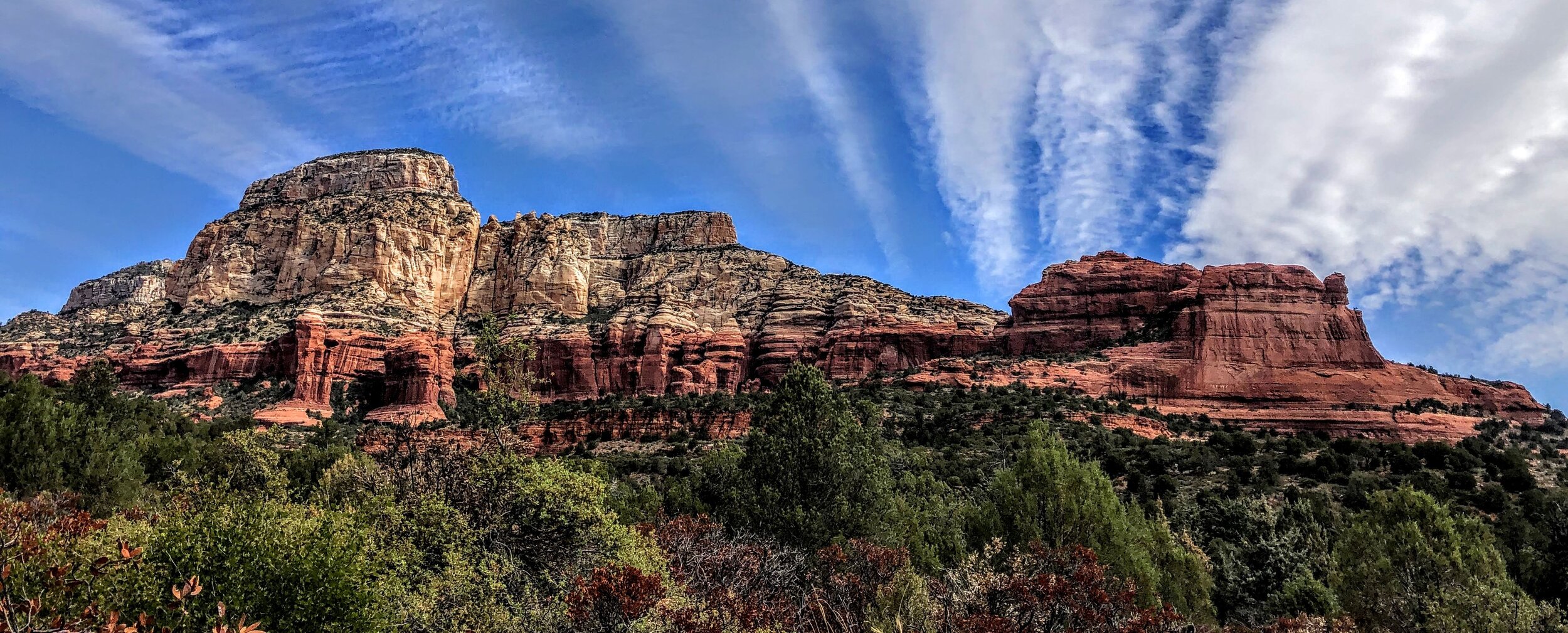"It felt like a resurrection."
That's the first thing I wrote in my journal when I got home from a ten-day trip to Ireland and Scotland.
And this feeling of resurrection? It started in a 5,000 year old passage tomb, Bru na Boinne.
Built by Neolithic people at least a thousand years before the great pyramids at Giza, Bru na Boinne stands in a bend of the Boyne River, overlooking a valley that contains many dozens more of these passage tombs, several aligned perfectly with this particular tomb.
Bru na Boinne, photo: Andy Bruner
The stones that built these cairns come from sites 40 or 50 kilometers away. Some 200,000 tons of stone compose this particular cairn, including 40+ huge slabs that compose the interior passageway, as well as a dozen or so standing stones on the exterior.
Our guide told us that experts have estimated that it would take weeks and even MONTHS to move ONE of these huge standing stones up from the river, using log rollers.
Foreground: standing stone; background: wall detail
Now think of this: the average life span of Neolithic people at this time was 25 to 30 years. I would be the ancient old crone in this culture, had I survived to my current great age of 51.
People who were only going to live 25 to 30 years on average spent MONTHS of their lives rolling a stone up hill to stand in this spot.
That is an intense measure of devotion to whatever was happening here, to say nothing of the engineering and mathematical precision that designed the site, and the skilled craftsmanship of the stoneworkers, whose mortar-free domed ceiling is still standing inside a structure built 3,000 years before Jesus walked the earth.
"You are very welcome to Bru na Boinne," our tour guide said.
A dozen or so of us had ducked our way under the lintel stone and squeezed ourselves down the narrow passageway, to stand shoulder-to-shoulder in a small round chamber.
"You are standing in a cruciform tomb," she said.
And sure enough, as I looked around, I realized: this structure is a miniature of every great cathedral in Europe.
The passageway we just squeezed down is the nave, and we are pressed together in the transept, with three niches around us, just like a chancel at the head of the cross, and a transept chapel on each arm.
In the chancel-niche is a very famous piece of Neolithic art: three spirals, woven together, dancing on the stone like breath and wind and Spirit and life.
The passageway we just squeezed along is perfectly aligned with the winter solstice, our guide tells us. There is a window above the passageway, and the passageway is perfectly angled so that the window is level with the stone in the chancel-niche at the head of the passageway. The stone with the three-spiral carving.
When the great stone door of the tomb is opened on the longest, darkest day of the year, the rising morning sun of the winter solstice will perfectly strike the window above the passageway, flooding this tomb with light.
That event has been occurring every single December 21 for 5,000 years.
Our tour guide turned out the lights and we stood in silence, a dozen strangers pressed together in a tomb, breathing, waiting for the light to return.
In this tomb, built for light.
In this tomb, built somehow for hope.
The mystic sweet communion with all of humanity overwhelmed me in that moment, that Neolithic people built a structure that is a poem for me today, giving language with stones and light and interwoven spirals to all that humanity holds dear.
We all carry with us the inevitability of death, the one last thing that not one of us will escape.
We all carry with us a capacity for hope, even on the darkest days and through the longest nights.
We all carry these things: all of our sorrow, all of our hope.
All of our darkness, and all of our light.
There are no Others, only Us, the dearly beloved.
In my Evangelical tradition, we don't think much of what came before Jesus, about 2,000 years ago.
We don't think much of those bearers of Imago Dei who lived outside the pages of our book.
But that day at Bru na Boinne, I felt an intense kinship with the hopes and fears of all the years, an immense respect for the skill and knowledge of the people who built Bru na Boinne, and a deep gratitude for these seekers of light who, 5,000 years ago, made this path of light for me to walk today.
"I wish peace to every man, woman and child, and I pray that the image and likeness of God in each person will enable us to acknowledge one another as sacred gifts endowed with immense dignity." Pope Francis


